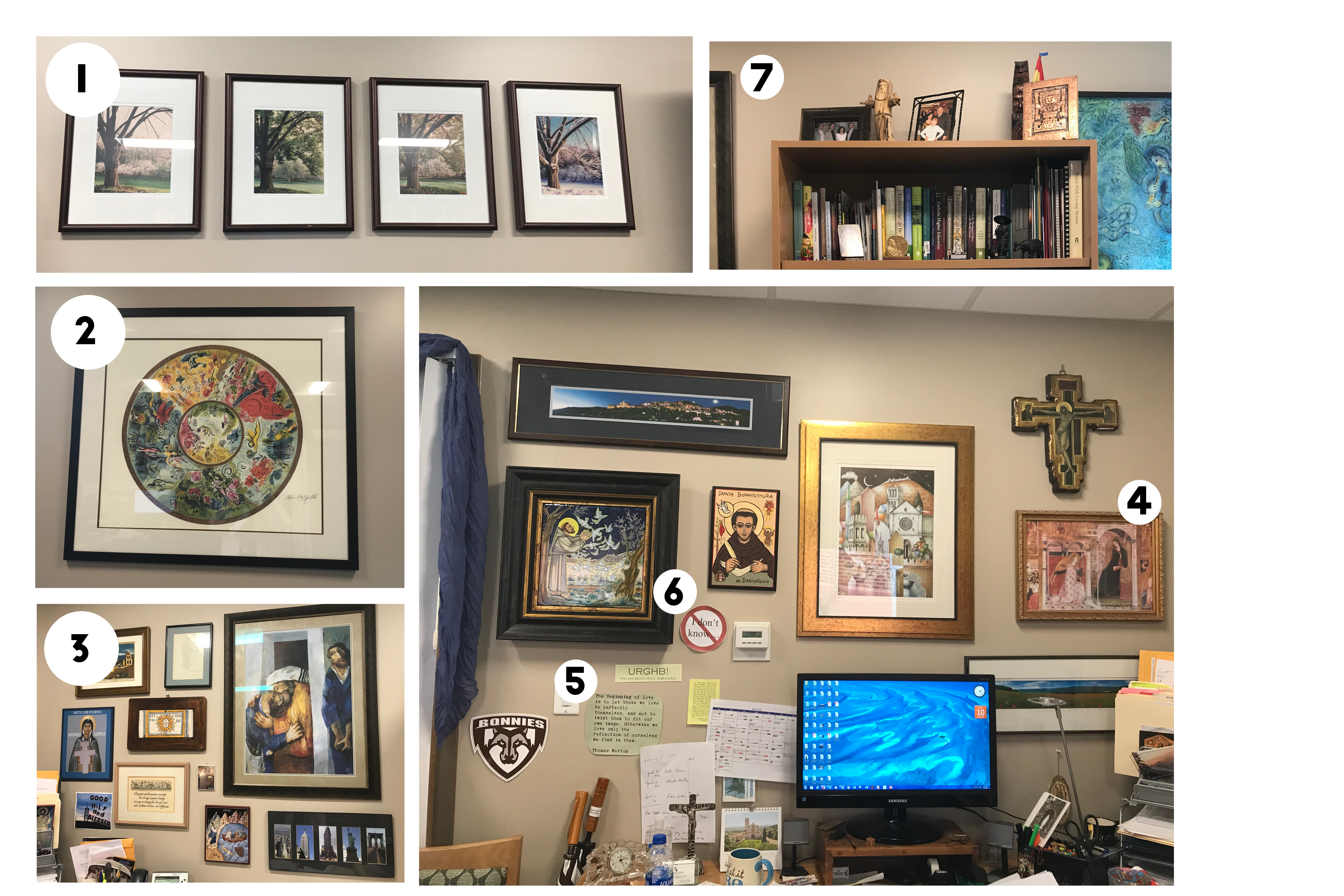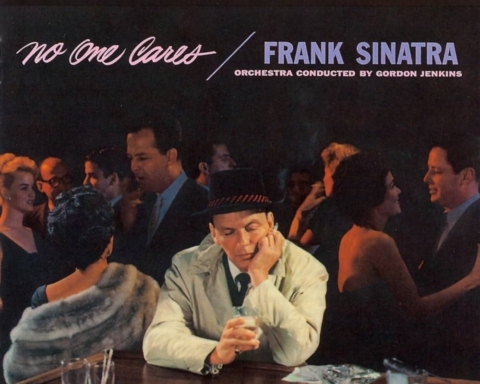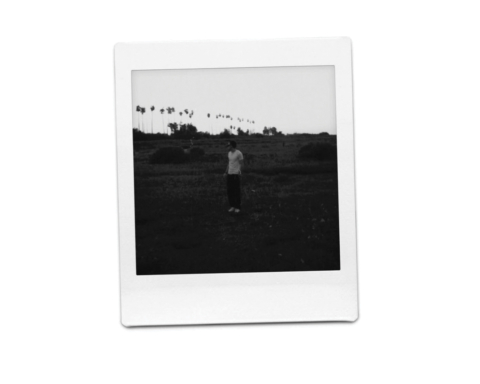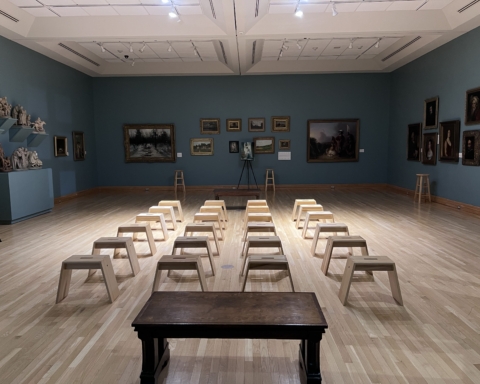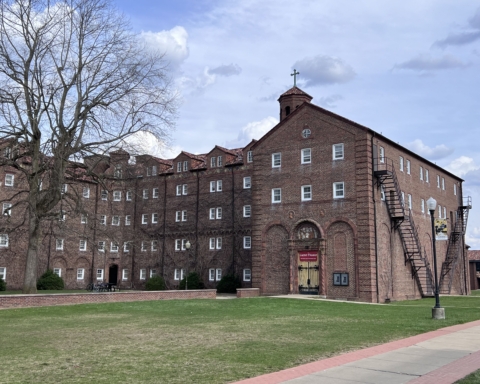The recently established McGinley-Carney Center for Franciscan Ministry is the home to many offices, including one belonging to Fr. Francis Di Spigno, O.F.M., executive director of University Ministries. When he relocated to his new office, he had to decide what items to bring.
His fish tank, not pictured, was one of the first things that came to mind when decorating his office, since he had a tank in his former office that he dismantled when he moved out. Di Spigno put it back together in his new office, and the large tank placed on the wall right past the entrance is home to a variety of fish.
“I love it,” he said. “It’s very peaceful and calming.”
Di Spigno put his first set of fish back into the tank in September when he reassembled it. After they continued to survive, he added more in and has reached the peak threshold of number of fish for the tank. Di Spigno will get more fish depending on the current ones’ lifespans.
In moving out of his office, Di Spigno had to move his new items in and, for a long time, a lot of his items were kept in boxes. Unsure of where to put each item, as everything in his office holds significance to him, he took his time carefully arranging everything.
1) Above the fish tank are four pictures, each representing the four seasons, given to him by a friend over 20 years ago. They not only hold a connection to the friar, but also signify his appreciation for being able to experience all four seasons.
“I could never see myself as a person who lives in Florida,” Di Spigno said. “Despite the fact that I’m the minority, I do like the snow.”
2) Like the four seasons, a picture of intricate detail and design hangs on the back wall above the couch. This piece is meant to represent the cycle of life that happens and is a tribute to music, according to Di Spigno, as it’s based off the ceiling of the Opéra Garnier house in Paris.
“I love the colors and I love how it worked together,” Di Spigno said as he admired the piece.
3) On the walls surrounding his desk, he has Franciscan artwork, in addition to ones from Assisi, as a collection of what he calls “tourist-type pieces.” Among those pieces is a picture of the top of the Doyle chapel with the words “GOOD HOLY and BLESSED,” next to it, which a student gave to him. The words held significance for her too, as she used the words to decorate her graduation cap.
“We are all good, holy and blessed,” he said. “She made that for me, so that’s got a prominent spot on the wall.”
4) A portrait depicting the parable “The Prodigal Son” also hangs on his wall, which tells the story of Jesus’ image of who God is, according to Di Spigno.
“God is a merciful God and loving father,” he said. “Even towards a son who has walked away, and he comes back with sorrow in his heart for making a mistake, and a loving God just embraces him and welcomes him back.”
Di Spigno loves how the story shows a great image of God, but it also shows a great image of humankind. In the painting, the other son is separated from his brother and father behind a wall.
“He’s the one who does everything right and who’s really mad at the father,” he said. “And we’re both of them, because we think if we do it right, we’re in, but we miss the mark. But sometimes we make mistakes, and all we have to do is come back.”
5) Di Spigno said this piece serves to remind visitors that everyone is good, holy and blessed. On his wall, he also has a strip of paper with the acronym, “URGHB!” He refers to it when talking to people, but he also has it to further the significance of the mantra in his life.
6) Right next to it is a circle with a red slash through it that reads, “I Don’t Know…,” which Di Spigno has hanging up as it a reminder that the phrase is not allowed in his office.
“You have to stop, and you have to think,” he said. “You can’t say ‘I don’t know.’ That usually gets people to think. It’s just to remind people, ‘wait, stop.’ And then you can speak.”
To Di Spigno, everything in his office has a little piece of his history, including random collections of figures from his travels to Bolivia, Russia and Vietnam.
7) On the top shelf of his bookcase to the right of his desk, sits Matryoshka nesting dolls from Russia, along with two items in the middle from Bolivia and two black statues on the end from Vietnam, as mementos of his trips.

